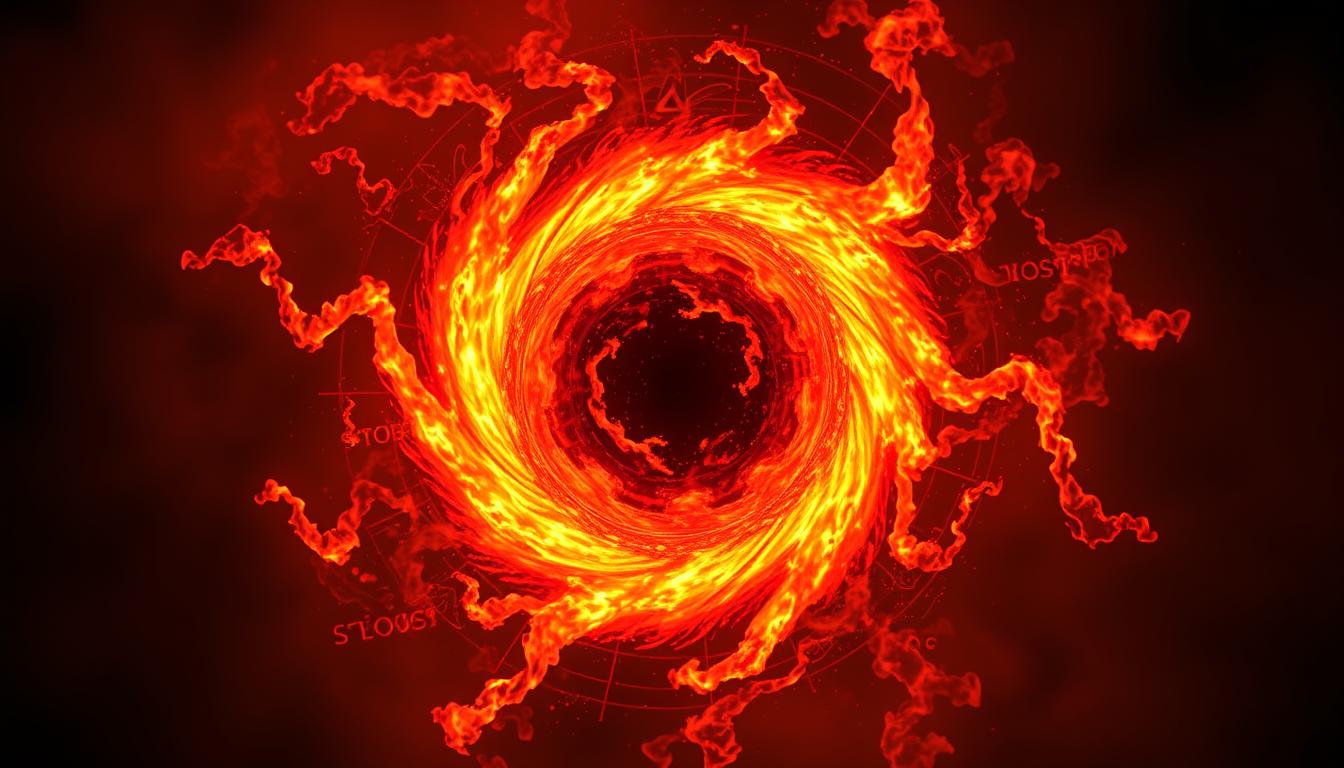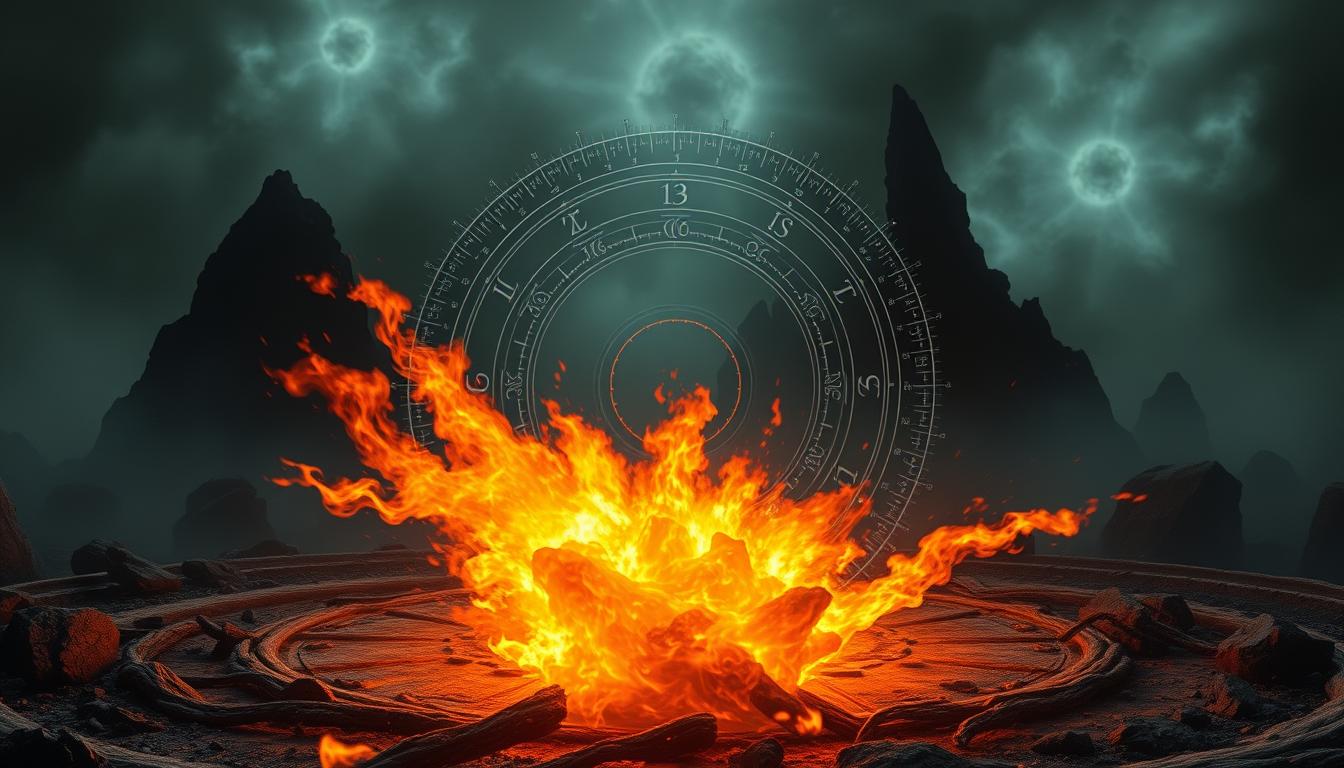Unleash the Power of Fireball 5e: A Player's Guide
Few spells in Dungeons & Dragons pack as much punch as this fiery classic. As a 3rd-level evocation, it turns battles with a single cast, engulfing foes in a 20-foot sphere of destruction. I’ve seen it reshape encounters—whether clearing swarms or forcing enemies to rethink their strategy.

But there’s more to it than just raw damage. Smart positioning and timing elevate it from a simple blast to a tactical masterpiece. Over my campaigns, I’ve learned when to hold back and when to let loose—saving spell slots for maximum impact.
This guide dives into optimizing your approach. Avoid common pitfalls like hitting allies or wasting high-level slots. Master the radius, and you’ll dominate the battlefield.
Key Takeaways
- One of the most powerful 3rd-level spells for wizards and sorcerers.
- Deals massive fire damage in a 20-foot radius.
- Requires careful positioning to avoid harming allies.
- Best used against grouped enemies for maximum efficiency.
- Timing and resource management are key to mastering it.
What Is Fireball 5e?
Every wizard and sorcerer dreams of wielding this iconic explosion of flames. As a 3rd-level evocation, it’s a rite of passage—raw power packed into a single spell slot. The moment it ignites, enemies learn why it’s feared.
The Basics of Fireball
This spell demands verbal chants, precise hand movements, and a pinch of *bat guano* mixed with sulfur. Why these components? Thematic flair—it’s alchemy meets chaos. The result? A 20-foot radius sphere of fire damage, erupting up to 150 feet away.
Here’s how it stacks against other area spells:
| Spell | Level | Radius | Damage |
| Fireball | 3rd | 20 ft | 8d6 |
| Lightning Bolt | 3rd | 5x100 ft line | 8d6 |
| Shatter | 2nd | 10 ft | 3d8 |
Notice the radius advantage. Few spells cover this much area at this level. Even a successful Dexterity saving throw only halves the pain.
Why Fireball Is a Must-Have Spell
It’s not just damage—it’s psychological warfare. Enemies scatter or risk oblivion. My first time casting it? I misjudged the radius and lit a tavern’s ale stash on fire. Lesson learned: always check your backdrop.
For sorcerers and wizards, it’s a signature tool. By 5th level, you’ll melt hordes like butter. Just remember: great power requires greater aim.
Fireball 5e Mechanics Explained
Understanding the mechanics behind this explosive spell can turn a good caster into a great one. It’s not just about the flames—it’s about precision. From bat guano to radius calculations, every detail shapes your battlefield dominance.
Casting Time and Components
This evocation takes an action to cast, letting you move before or after unleashing it. The components? A verbal incantation, a flick of the wrist, and a pinch of bat guano. Odd? Maybe. Effective? Absolutely.
Damage and Saving Throws
Base damage is 8d6 fire, but upcasting adds 1d6 per level above 3rd. Even if enemies pass the Dexterity saving throw, they take half—no total escapes. Here’s how scaling works:
| Spell Level | Damage | Avg. Output |
| 3rd | 8d6 | 28 |
| 5th | 10d6 | 35 |
| 7th | 12d6 | 42 |
Area of Effect and Radius
The 20-foot radius sphere can wrap around corners, igniting hidden foes and barrels alike. I once cleared a bandit hideout by targeting a chandelier—flammable objects are your friend.

Positioning is key. Misjudge the area, and you’ll toast your party. Measure twice, cast once.
Mastering Fireball: Tips and Strategies
Mastering this spell isn’t just about casting it—it’s about strategy. Knowing when to unleash it, how to avoid hitting allies, and when to upcast can make all the difference. Here’s how to elevate your gameplay.
Best Situations to Cast Fireball
This spell shines against grouped enemies. If you see a cluster of foes, it’s time to act. Use the 150-foot range to position yourself safely. I once cleared a room of goblins with a single cast—it’s a game-changer.
Prioritize it over single-target spells when facing swarms. The 20-foot radius ensures maximum impact. Just be mindful of flammable objects—burning terrain can create ongoing hazards.
Avoiding Friendly Fire
Close-quarters combat is risky. Misjudge the radius, and you’ll toast your party. Always measure twice before casting. I learned this the hard way when I nearly TPK’d my group with a misjudged blast.
Positioning is key. Use the environment to your advantage—cast from high ground or behind cover. If allies are in the area, wait for a better moment.

Using Higher-Level Spell Slots
Upcasting this spell adds 1d6 damage per level above 3rd. A 4th-level slot deals 9d6, and the damage increases with each higher-level spell slot. But is it worth it?
Consider the risk/reward. Upcasting is great for tough battles, but don’t waste slots on weaker foes. Save your spell slots for when they’ll make the biggest impact.
Optimizing Your Fireball 5e Gameplay
When it comes to maximizing your spellcasting potential, few tools are as versatile as this fiery classic. It’s not just about unleashing chaos—it’s about making every spell slot count. Over my campaigns, I’ve learned that the right strategy can turn a good caster into a battlefield legend.
Combining Fireball with Other Spells
Pairing this spell with control spells like Web or Entangle can create devastating combos. I once trapped a group of enemies in a web before igniting them—efficiency at its finest. Sorcerers can take it further with metamagic like Quickened Spell, allowing you to cast Scorching Ray in the same turn.
Here’s a quick comparison of effective spell combinations:
| Spell Combo | Effect |
| Fireball + Web | Traps enemies for guaranteed damage |
| Fireball + Scorching Ray | Maximizes single-turn damage output |
| Fireball + Counterspell | Prevents enemy casters from disrupting your plan |
Choosing the Right Targets
This spell shines against grouped enemies. I always look for clusters of four or more targets to maximize its area of effect. Be mindful of fire-resistant foes—save your spell slots for enemies vulnerable to flames.
Positioning is key. Use the environment to your advantage, like casting from high ground or behind cover. Avoid hitting allies by measuring the radius carefully.

Managing Spell Slots Efficiently
Resource management is crucial. I save my higher-level spell slots for tougher battles, where the damage increase from upcasting can turn the tide. A 4th-level slot increases 1d6 in damage, making it worth the investment against bosses or large groups.
Here’s a quick guide to upcasting efficiency:
- 3rd-level slot: Base 8d6 damage
- 5th-level slot: 10d6 damage
- 7th-level slot: 12d6 damage
Remember, great power requires greater planning. Use your spell slots wisely to dominate every encounter.
Conclusion
Mastering this iconic spell takes more than just memorizing its components—it’s about strategy and precision. From scaling its damage with higher level slots to perfecting your positioning, every detail matters. Practice in mock combat scenarios to refine your timing and avoid friendly fire.
Don’t forget to manage your components. A pinch of bat guano might seem trivial, but it’s essential for success. This spell adapts to any playstyle, whether you’re a tactical planner or a bold risk-taker.
Finally, experiment with creative uses. Pair it with other spells or leverage the environment for maximum impact. The more you practice, the more you’ll dominate the battlefield. Ready to ignite your next adventure? Let the flames guide you.